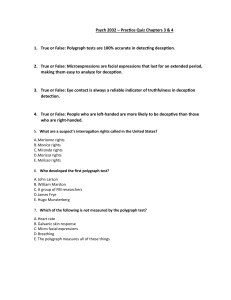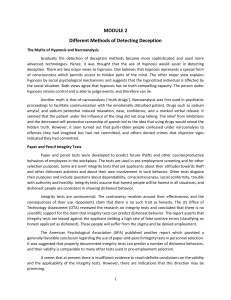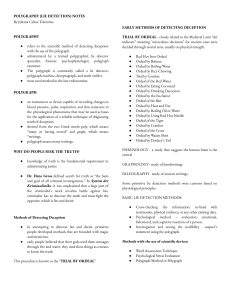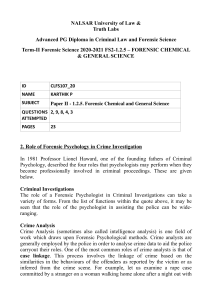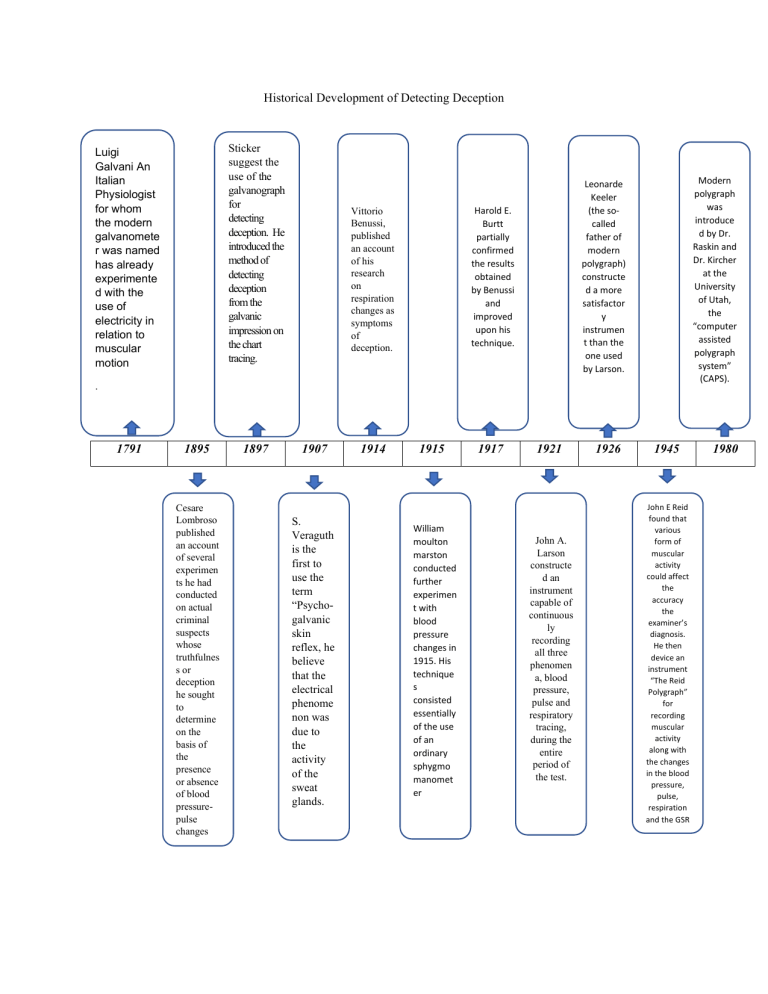
Historical Development of Detecting Deception Sticker suggest the use of the galvanograph for detecting deception. He introduced the method of detecting deception from the galvanic impression on the chart tracing. Luigi Galvani An Italian Physiologist for whom the modern galvanomete r was named has already experimente d with the use of electricity in relation to muscular motion Harold E. Burtt partially confirmed the results obtained by Benussi and improved upon his technique. Vittorio Benussi, published an account of his research on respiration changes as symptoms of deception. Modern polygraph was introduce d by Dr. Raskin and Dr. Kircher at the University of Utah, the “computer assisted polygraph system” (CAPS). Leonarde Keeler (the socalled father of modern polygraph) constructe d a more satisfactor y instrumen t than the one used by Larson. . 1791 1895 Cesare Lombroso published an account of several experimen ts he had conducted on actual criminal suspects whose truthfulnes s or deception he sought to determine on the basis of the presence or absence of blood pressurepulse changes 1897 1907 S. Veraguth is the first to use the term “Psychogalvanic skin reflex, he believe that the electrical phenome non was due to the activity of the sweat glands. 1914 1915 William moulton marston conducted further experimen t with blood pressure changes in 1915. His technique s consisted essentially of the use of an ordinary sphygmo manomet er 1917 1921 John A. Larson constructe d an instrument capable of continuous ly recording all three phenomen a, blood pressure, pulse and respiratory tracing, during the entire period of the test. 1926 1945 John E Reid found that various form of muscular activity could affect the accuracy the examiner’s diagnosis. He then device an instrument “The Reid Polygraph” for recording muscular activity along with the changes in the blood pressure, pulse, respiration and the GSR 1980
